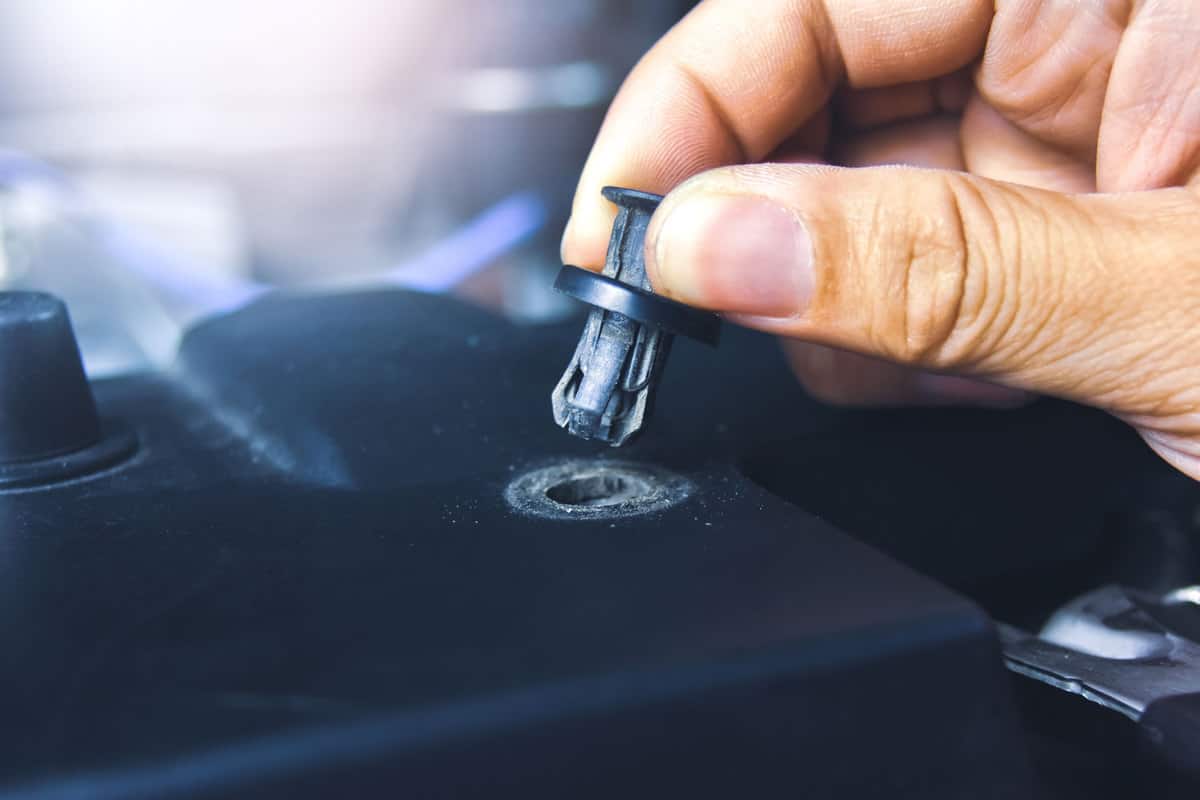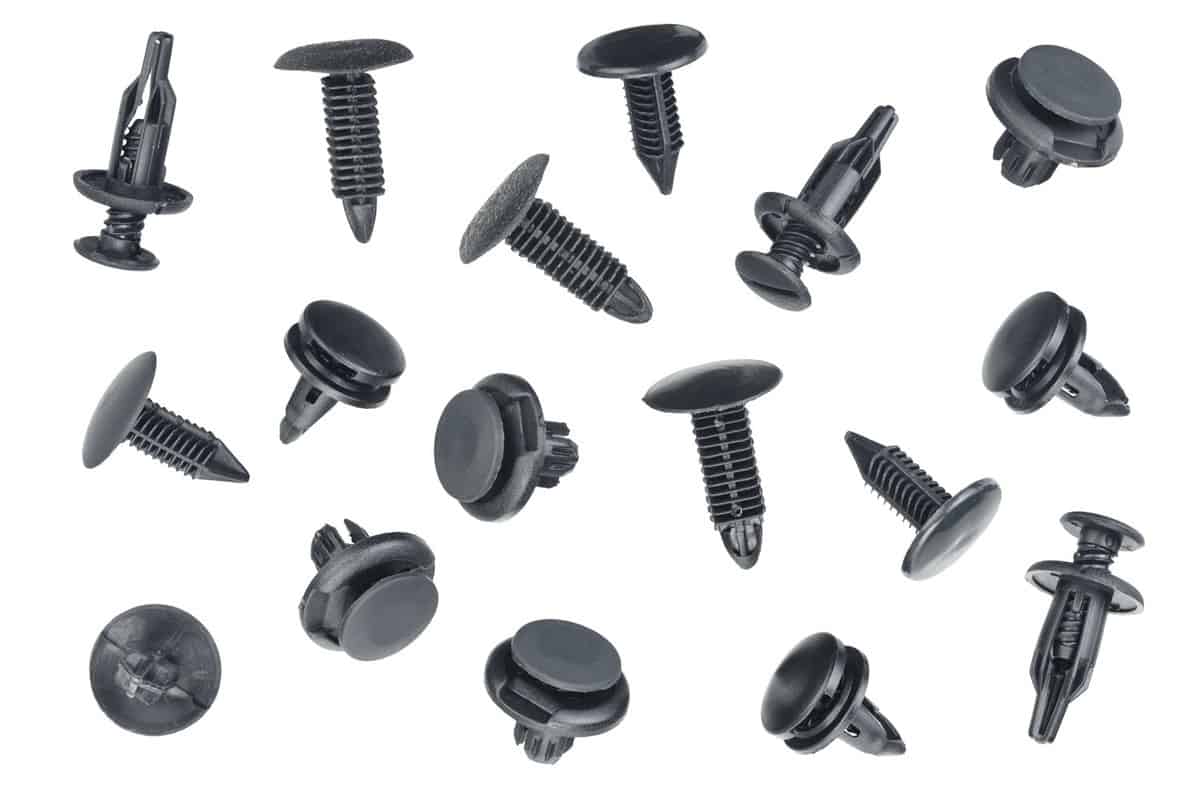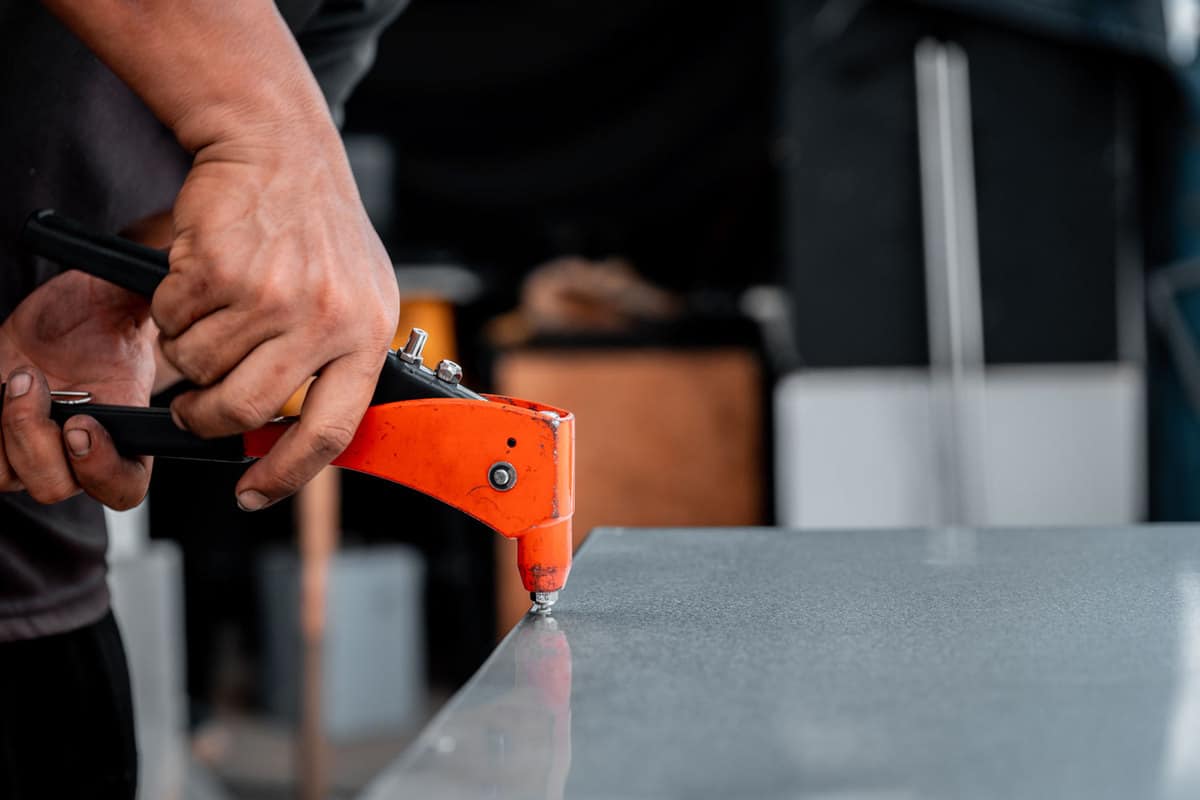If your vehicle needs bodywork, you may come across plastic screw rivets. The problem is they aren't the easiest to remove. So let's look at a few tips on how to remove them.
To remove plastic screw rivets, you can take a few different approaches:
- Pop rivet removal tool
- Use a screw (for Philips head plastic rivet)
- Hammer Claw
- Needle nose pliers
- Small flat-head screwdriver
- Drill
While plastic screw rivets are essential to keeping your car body together, they can be pesky to remove. In this article, we will discuss the different tools you can use to remove plastic screw rivets. In addition, we will answer other frequently asked questions about plastic screw rivets, so read on!
![Plastic Rivets used in the car engine, How To Remove Plastic Screw Rivets [6 Different Ways]](https://vehq.com/wp-content/uploads/2022/03/How-To-Remove-Plastic-Screw-Rivets-6-Different-Ways.png)
How To Remove Plastic Screw Rivets
Plastic screw rivets are a type of fastener that is used to join two pieces of plastic together. They are typically made from nylon and are used in various applications, such as automotive, construction, and manufacturing.
You can typically find them in the wheel well or body panel gaps on your vehicle. They are also used extensively in the manufacturing of plastic parts.

While they are called "screws," they aren't installed like a regular screw is. Instead, plastic screw rivets are pushed through the two pieces of plastic that you are joining.
The problem is that they are difficult to remove without damaging the surrounding plastic. You can use different tools to get them out, but each has its own set of issues.
Panel Clip Remover Pliers
The most common tool for removing plastic screw rivets is a panel clip remover plier tool. This is a small, hand-held tool with a claw on one end and a screwdriver. The claw end is used to pry the rivet out of the hole, and the screwdriver end is used to remove the rivet from the tool.
The problem with a pop rivet removal tool is that it can be challenging to get a good grip on the rivet. If you don't have a good grip, you risk damaging the surrounding plastic.
Take your time working the tool underneath the rivet before trying to pull it out.
Use A Screw
Some plastic screw rivets have a Phillips head on them. However, you can't easily unscrew them with a Philips screwdriver. However, if you take a pointed screw that is slightly bigger than the rivets head, then you can pull it.
Take the screw and twist it into the plastic rivet head to do this. Once it is tight into the head, you can pull the rivet out.
Hammer Claw
A common method is by using a hammer claw. It is similar to using a pop rivet tool, but not everyone has a pop rivet tool handy. So instead, if you have a hammer with a claw on it, you can work underneath the plastic rivet and pull it out.
Needle Nose Pliers
Another option is to use need nose pliers. These are common tools to have in your toolbox, and they can be effective at removing plastic screw rivets.
The pliers have a small, pointed end that can fit into the rivet hole. You can then use the pliers to twist and pull the rivet out.
Be careful with this method, as you can easily break the rivet off if you're not careful.
Small Flat-Head Screwdriver
You can try to use a small flat-head screwdriver. This is one of the least effective methods because it is hard to grasp the rivet. However, it may be your only option if you don't have any other tools.
The flat head screwdriver method works well with the needle-nose pliers. You can lift the head of the rivet and grab it with the pliers to pull it out.
Now that you know how to remove plastic screw rivets, you can get them out of the way and continue with your project. Remember to take your time and be careful not to damage the surrounding plastic.
Drill
Lastly, you can drill it out if the rivet does not come out after trying any of the methods listed above.
This is the last resort because you risk damaging the surrounding plastic. If you do have to drill the rivet out, use a tiny drill bit that is slightly smaller than the rivet's head.
Drill into the rivet head until the bit goes all the way through. Once the drill bit is through the other side, use a pair of pliers to pull the rivet out.
What Are Some Applications That Use Plastic Screw Rivets?

Automotive, construction and manufacturing are the most common applications for plastic screw rivets. However, they are also used in various other applications, such as appliances and gadgets.
How Do I Install A Plastic Screw Rivet?
Plastic screw rivets work similarly to a wall molly. First, the rivet is inserted into the hole, and then a tool is used to push it in until it snaps. This forms a permanent bond between the two pieces of plastic.
You can think of it as an anchor for the plastic. Once it is in place, you can hold the plastic in place.
Are Plastic Rivets Any Good?
Some people might ask, are plastic rivets any good? The answer is yes; plastic rivets are a strong and sturdy option for fastening two pieces of plastic together.
They are also less likely to damage plastic than other fastening methods. Additionally, they are a great choice for fastening in difficult areas to reach.

For example, if you are trying to fasten something on the underside of a table, plastic rivets would be a good option.
What Is A POM Rivet
POM rivet is an acronym for polyoxymethylene. It is a type of plastic that is often used in manufacturing. You can use this type of rivet for plastic to plastic, metal, fiberglass, or other plastic assemblies. It is a good choice for high-stress applications.
POM rivet is resistant to most chemicals and has low water absorption. It is also lightweight and can be machined easily. It is available in various colors, including black, blue, green, natural, red, and white.
What Is A Plastic Rivet Tool?
A plastic rivet tool is a hand-held device used to fasten plastic screw rivets. It has a small, pointed end that is inserted into the hole of the rivet. The tool is then used to twist and pull the rivet out.
You can also use the tool to install a plastic screw rivet. First, the rivet is inserted into the hole, and then the tool is used to push it in until it snaps.
This forms a permanent bond between the two pieces of plastic.
What Is The Strongest Type Of Rivet?
Structural rivets are the strongest type of rivets. They are used in a variety of applications, including construction and automotive. They are available in a variety of sizes and materials.
What Is The Difference Between A Screw And A Rivet?
A screw is a type of fastener that's inserted into a hole to hold two pieces of material together. It has a threaded shaft that is used to tighten it in place. A rivet is also a fastener, but it is inserted into a hole and then hammered or squeezed until it snaps in place.
Another difference is how they are removed. One can remove a screw by using a tool to loosen it. A rivet must be cut, pulled, or drilled out.
Which Is Stronger: A Screw Or Rivet?
Depending on the type of screw, they can be stronger than a rivet. For example, a machine screw with a washer meant for a structural application can be stronger than a rivet.
In addition, wood or metal screws with the same diameter as a rivet will be stronger due to more cross-sections.
Final Thoughts
![Plastic Rivets used in the car engine, How To Remove Plastic Screw Rivets [6 Different Ways]](https://vehq.com/wp-content/uploads/2022/03/Plastic-Rivets-used-in-the-car-engine.jpg)
Plast screw rivets are a great option for fastening two pieces of plastic together. They are easy to use and provide a stronghold.
They are also less likely to damage plastic than other fastening methods. Additionally, they are a great choice for fastening in difficult areas to reach.
As you can see, they can be tough to remove if you don't have the right tool. So make sure you have a rivet removal tool on hand before starting your project.
For more articles like this one, check out our website:
Should RV Batteries Be Removed In Winter?
How To Remove The Seats In A Buick Enclave
How To Remove A Spare Tire From A Truck – Even Without An Extension Rod
